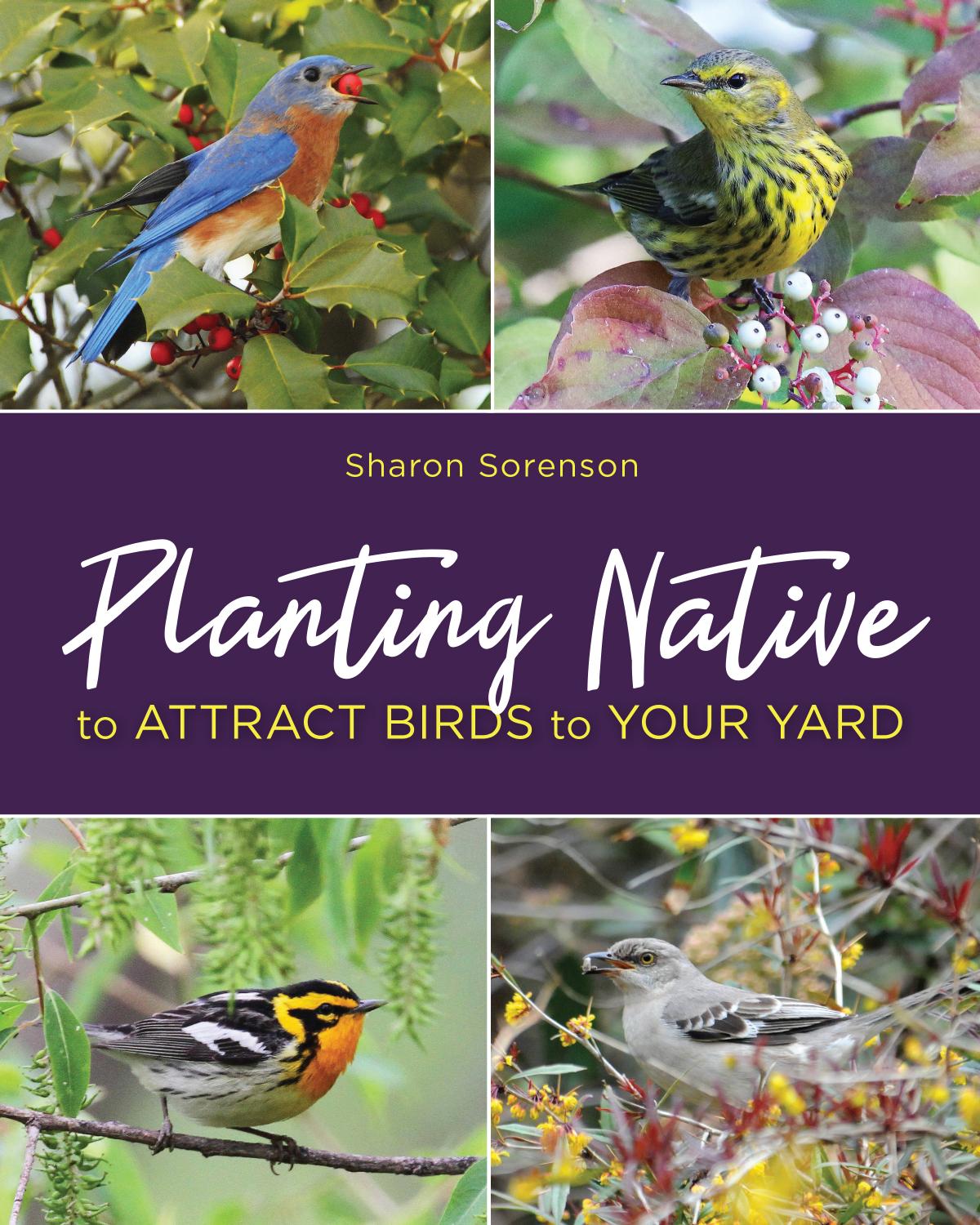Planting Native to Attract Birds to Your Yard by Sharon Sorenson

Author:Sharon Sorenson
Language: eng
Format: epub, pdf
ISBN: 9780811767439
Publisher: Stackpole Books
Mini-Yard and Pots-and-Patio Garden Alternative Deciduous Trees
Since not everyone has ample square footage for standard-sized deciduous trees, and since not everyone wants to limit the landscape to a single deciduous tree, some options for smaller cultivars make viable alternatives. Even in super-sized yards with abundant space, sometimes a feature planting of a single micro cultivar or even a little grove of them might function well near the driveway or entryway or perhaps as a central focal point.
Here are nine bird-loving trees with 17 specific species, varieties, or cultivars, all well worth considering for multiple landscaping uses—especially, of course, providing the ultimate bird feeder. When you make your choices, update your yard map accordingly.
Deciduous Micro Cultivars for Mini Yards and Pots-and-Patio Gardens
COMMON NAME SCIENTIFIC NAME COMMENTS NATIVE, PLANTING ZONES
Willow Salix spp. Generally prefer moist soils As noted below
American pussy willow S. discolor Shrubby, 6–15' tall, 4–12' spread; average, medium to wet soil in full sun or part shade; tolerates drier soils than most willows; may be cut to ground every 3–5 years to maintain smaller size; good as hedge or in rain garden Eastern US except TN, FL, SC, GA, AL, LA, and AR Zones 4–8
Pink pussy willow S. discolor ‘Rosea' 15–20' tall; 12–15' spread; average water needs; full sun to part shade; pink flowers mid-spring Cultivar Zones 4–8
Purple willow S. purpurea ‘Nana’ 3–5' tall; 3–5' spread; full sun, medium to wet soil; tolerates clay soil; showy gray-white flowers attract butterflies; deer resistant; winter interest Cultivar Zones 4–8
Dogwood Cornus spp. As noted below As noted below
Flowering dogwood C. florida 15–30' tall, 15–30' spread; showy flowers, red fall foliage, berries; common in understory; prefers at least partial shade; commonly cultivated, with many cultivars Eastern US except MN, WI, and IA Zones 5–9
‘Red Pygmy’ C. florida ‘Red Pygmy’ 3–7' tall, 2–5' spread; easily grown in average, moist but well-drained soil; full sun to part shade; slow-growing; rose-red blossoms Dwarf cultivar Zones 5–9
Red maple Acer rubrum Popular specimen tree; also noted for fall foliage As noted below
‘Bowhall’ A. rubrum ‘Bowhall’ 40–50' tall, 15–25' spread; columnar; narrowest of red maples; urban, clay-soil and wet-soil tolerant Cultivar Zones 3–9
‘Armstrong Gold’ A. rubrum ‘Armstrong Gold’ 40' tall, 12' spread; columnar, tightly upright branches; bright-gold fall foliage; perfect for narrow street planting Cultivar Zones 3–9
Sugar maple ‘Reba’ (‘Belle Tower’) Acer saccharum ‘Reba’ 45' tall, 18' spread; narrow oval shape; superior heat tolerance; yellow-orange fall foliage Cultivar Zones 3–8
Bald cypress Taxodium distichum Attractive landscape tree; tolerates many soil conditions Eastern US except MN, IA, WI, and east of NY Zones 4–9
‘Lindsey’s Skyward’ T. distichum ‘Skyward’ Dwarf conifer, 25–30' tall, 5–10' spread, can be pruned to keep smaller; no roots or knees; highly resistant to ice-storm stress; copper fall foliage Cultivar Zones 4–9
‘Falling Waters’ T. distichum ‘Falling Waters’ 8–15' tall, 8–10' spread; weeping; full sun, cold tolerant; bronze to rust fall foliage; use as specimen, edging; can be espaliered against or draped over walls Cultivar Zones 4–9
‘Mickelson’ usually sold under ‘Shawnee Brave’ T. distichum ‘Mickelson’ 50–70' tall, 15–20' spread; narrow
Download
Planting Native to Attract Birds to Your Yard by Sharon Sorenson.pdf
This site does not store any files on its server. We only index and link to content provided by other sites. Please contact the content providers to delete copyright contents if any and email us, we'll remove relevant links or contents immediately.
The Lonely City by Olivia Laing(4120)
Animal Frequency by Melissa Alvarez(3755)
All Creatures Great and Small by James Herriot(3516)
Walking by Henry David Thoreau(3234)
Exit West by Mohsin Hamid(3183)
Origin Story: A Big History of Everything by David Christian(3139)
COSMOS by Carl Sagan(2950)
How to Read Water: Clues and Patterns from Puddles to the Sea (Natural Navigation) by Tristan Gooley(2855)
Hedgerow by John Wright(2776)
The Inner Life of Animals by Peter Wohlleben(2766)
Origin Story by David Christian(2683)
How to Read Nature by Tristan Gooley(2665)
Project Animal Farm: An Accidental Journey into the Secret World of Farming and the Truth About Our Food by Sonia Faruqi(2661)
How to Do Nothing by Jenny Odell(2645)
A Forest Journey by John Perlin(2587)
Water by Ian Miller(2584)
The Plant Messiah by Carlos Magdalena(2453)
A Wilder Time by William E. Glassley(2363)
Forests: A Very Short Introduction by Jaboury Ghazoul(2335)
